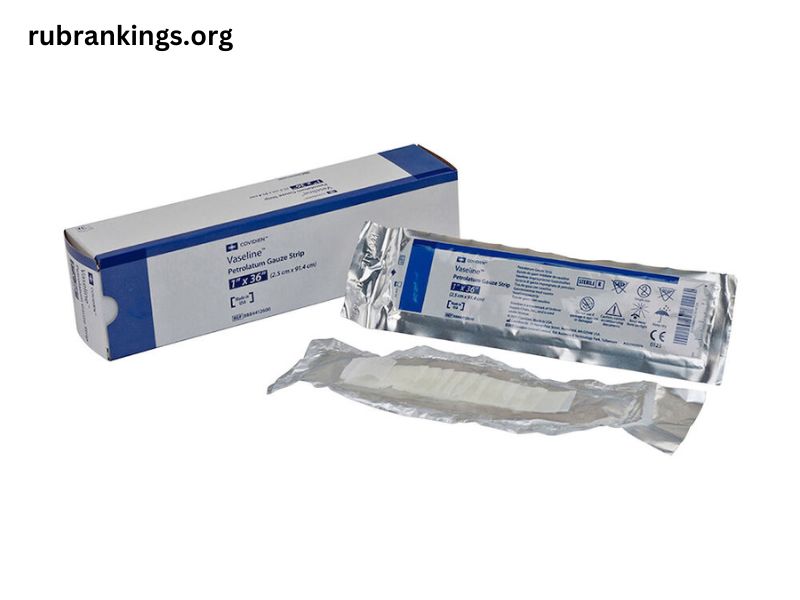Petroleum gauze, also known as petrolatum gauze or vaseline gauze, is a type of medical dressing used primarily for wound care. It provides a moist environment, which is beneficial for healing while preventing the adherence of the dressing to the wound. This article will guide you through the process of making petroleum gauze, including materials, steps, and safety considerations.
What is Petroleum Gauze?
Petroleum gauze is a sterile dressing that is impregnated with petroleum jelly (vaseline) or a similar substance. It is typically used to cover wounds, burns, and abrasions, making it easier to change dressings without damaging the healing tissue. Its occlusive nature keeps the wound moist and protects it from external contaminants.
Benefits of Petroleum Gauze
- Moisture Retention: Keeps the wound hydrated, promoting faster healing.
- Non-Adhesive: Reduces pain during dressing changes.
- Barrier Against Contaminants: Protects wounds from bacteria and debris.
- Versatile: Can be used on various types of wounds.
Materials Needed
To make petroleum gauze, you will need the following materials:
Essential Materials
- Sterile Gauze Pads: Available at pharmacies or medical supply stores. Choose the size according to your needs.
- Petroleum Jelly: You can use commercially available petroleum jelly or make your own by melting paraffin wax and mixing it with mineral oil.
- Double Boiler or Microwave: For melting the petroleum jelly if you choose to make your own.
- Stirring Utensil: A spoon or stick for mixing.
- Container: For storing your petroleum gauze. It should be airtight to maintain sterility.
- Scissors: For cutting gauze to the desired size.
- Gloves: To maintain hygiene during the preparation process.
Optional Materials
- Essential Oils: Some may choose to add antiseptic essential oils, such as tea tree oil, for additional antibacterial properties.
- Plastic Wrap: For wrapping the finished product before storing.
Step-by-Step Process
Step 1: Prepare Your Workspace
Before you start, ensure that your workspace is clean and organized. Disinfect the surface where you will be working. Wash your hands thoroughly and wear gloves to maintain hygiene.
Step 2: Melt the Petroleum Jelly
If you are using commercial petroleum jelly, you can skip this step. If you’re making your own:
- Set up the Double Boiler: Fill the bottom pot with water and bring it to a gentle simmer.
- Add Paraffin Wax and Mineral Oil: In the top pot, combine equal parts of paraffin wax and mineral oil. Stir occasionally until fully melted.
- Remove from Heat: Once the mixture is smooth and fully melted, remove it from the heat and let it cool slightly.
Step 3: Impregnate the Gauze
- Cut the Gauze: Using scissors, cut the sterile gauze pads to the desired size.
- Dip the Gauze: Using tongs or a fork, dip each gauze pad into the melted petroleum jelly. Make sure it is thoroughly saturated but not overly drippy.
- Remove Excess: Let the excess petroleum jelly drip off before placing the gauze on a clean surface or parchment paper to cool.
Step 4: Allow to Cool
Allow the impregnated gauze to cool completely. This will help the petroleum jelly solidify and adhere to the gauze.
Step 5: Store the Petroleum Gauze
- Packaging: Once cooled, place the petroleum gauze into an airtight container to maintain sterility. If desired, you can wrap each piece individually in plastic wrap.
- Labeling: Clearly label the container with the contents and date of preparation.
Safety Considerations
- Sterility: Ensure that all materials are sterile to prevent infections. If you’re using non-sterile gauze, you can sterilize it by boiling for 10 minutes or using a microwave.
- Skin Sensitivity: Before applying petroleum gauze to a large wound, perform a patch test on a small area of skin to check for allergic reactions.
- Expiration: Homemade petroleum gauze should be used within a few months. Always check for signs of degradation before use.
When to Use Petroleum Gauze
Petroleum gauze can be used in various situations:
- Minor Cuts and Scrapes: To promote healing and protect from infections.
- Burns: To provide a moist environment and reduce pain during dressing changes.
- Surgical Wounds: After the initial healing phase, petroleum gauze can help maintain moisture and protect the area.
- Chronic Wounds: Such as ulcers, where moisture retention is critical.
How to Apply Petroleum Gauze
- Clean the Wound: Before applying the gauze, clean the wound gently with saline solution or water.
- Apply the Gauze: Place the petroleum gauze directly on the wound, ensuring it covers the entire area.
- Secure the Dressing: Use medical tape or another sterile dressing to secure the petroleum gauze in place.
- Change Regularly: Change the dressing as needed, typically once every 1-3 days, or as directed by a healthcare professional.
Conclusion
Making petroleum gauze at home is a straightforward process that can be accomplished with minimal supplies. This versatile dressing provides significant benefits for wound care, including moisture retention and protection from contaminants. By following the steps outlined in this article, you can prepare your own petroleum gauze effectively and safely. Always remember to prioritize hygiene and safety in your wound care practices.



